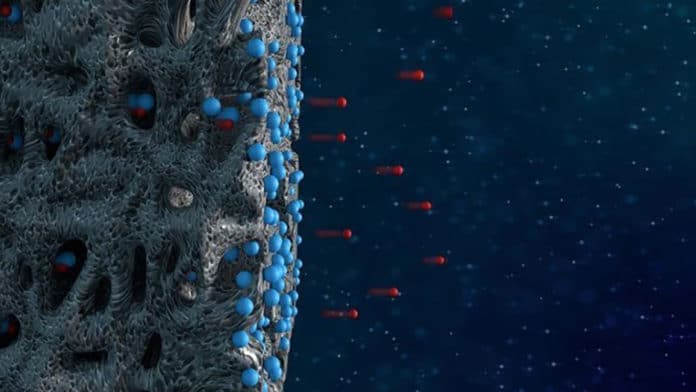Global freshwater scarcity is increasing due to population growth, increased water consumption per capita, and shrinking freshwater bodies due to climate change and overextraction. Desalination – converting seawater into freshwater – does allow for severely water-stressed areas to have their own water source.
For that process, certain charged particles, known as ions, have to be removed from the water. However, effective removal of several harmful or valuable ionic species present in seawater, brackish water, and wastewater can be challenging due to their chemical properties.
Now, researchers from Israel and the Netherlands have found a way to improve this ion-removal process by predicting the behavior of boron and other ions during water processing. Boron is toxic in high concentrations, and it inhibits plant growth.
These ions are amphoteric – their properties vary with the pH. “It is difficult to remove these particles from the water with standard membrane technologies,” says Jouke Dykstra, assistant professor at Wageningen University & Research. “You then have to add certain chemicals to control the pH. But we want to avoid that as much as possible: there is a strong trend to use fewer chemicals.”
Wageningen University researchers are working on this challenge, together with colleagues from Technion and Wetsus. They have developed a new theoretical model of the behavior of boron during a process known as capacitive deionization, which is an emerging membrane-less technique for water treatment and desalination, based on electrosorption of salt ions into charging microporous electrodes. When an electric current is applied, ions are adsorbed to the electrodes and hence removed from the water.
Currently, boron removal requires several reverse-osmosis stages, combined with dosing a caustic agent. Capacitive deionization (CDI) promises to enable the effective removal of such species without chemical additives but requires a deep understanding of the coupled interplay of pH dynamics, ion electrosorption, and transport phenomena.
The Israeli and Dutch researchers demonstrated both theoretically and experimentally that the water has to flow from the positive to the negative electrode, and not the other way around, as is now customary.
“Our research has shown that a good theoretical model is essential to effectively control such complex chemical processes,” concludes Dykstra. “This approach offers many interesting possibilities. You could also use this model for other challenges in wastewater treatment, including removing arsenic or small organic molecules, such as drug residues or herbicides.”
